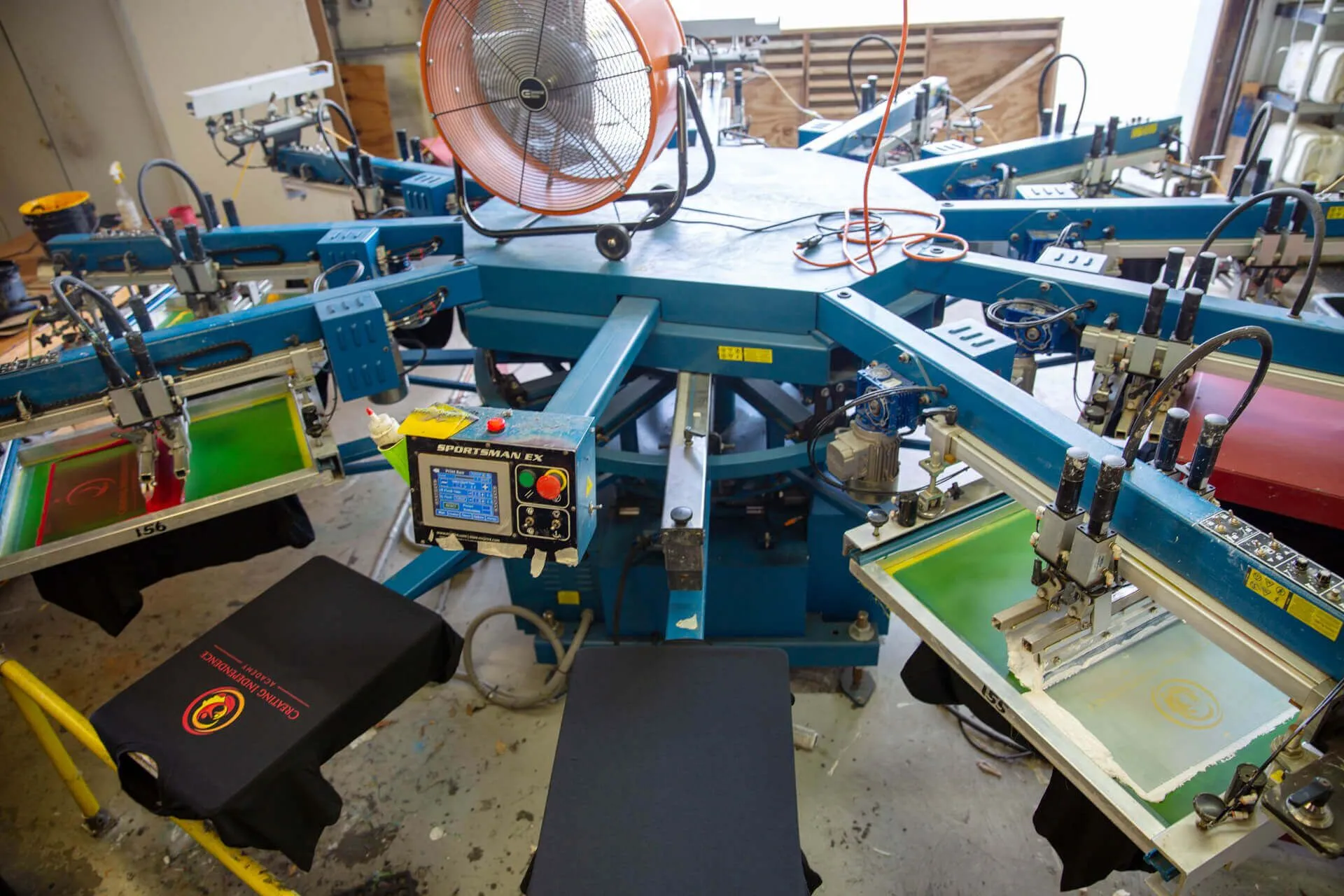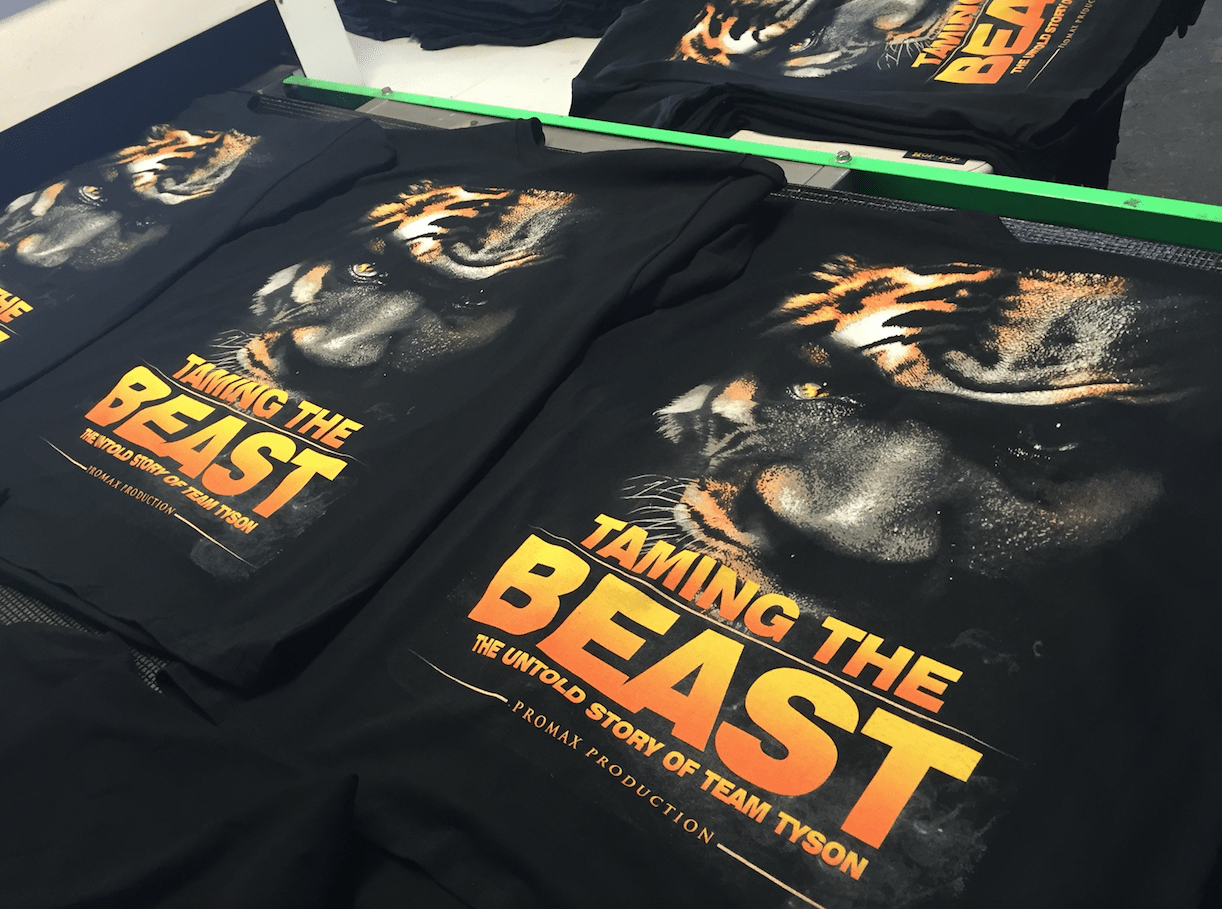Best Local T-Shirt Printing for Personalized Apparel
Best Local T-Shirt Printing for Personalized Apparel
Blog Article
Display Printing Uncovered: Everything You Required to Understand About Tee Shirt and Garment Printing Techniques
If you have actually ever before questioned how those vivid styles wind up on your favored tee shirts, you're in the right place. Screen printing is a remarkable approach that combines art with technique, offering unlimited possibilities for creative thinking. Comprehending the fundamentals, from equipment to ink options, can substantially influence your outcomes. Prepared to check out the essential elements that make display publishing an art kind? Let's uncover the details that can boost your projects.
The Essentials of Screen Printing: Exactly How It Functions
When you dive right into screen printing, you'll find it's both a scientific research and an art. At its core, screen printing includes creating a stencil, or screen, that enables ink to pass via just in details areas (screen printing kit). You begin by picking your design and preparing your display with a light-sensitive solution. Once you subject this emulsion to light, it hardens, leaving your style as a negative room.
Setting the screen over the fabric, then make use of a squeegee to push ink via the display onto the garment. Each step is necessary, and understanding them will certainly elevate your screen printing skills, changing easy garments into one-of-a-kind, expressive pieces.
Kinds Of Display Printing Methods
As soon as you comprehend the basics of display printing, it's time to check out the different strategies that can elevate your styles. One prominent method is traditional screen printing, where ink is pushed with a stenciled display.
If you're going for great details, think about discharge printing. This strategy gets rid of dye from the material, leaving a soft, classic appearance. One more alternative is plastisol printing, understood for its longevity and vivid colors, making it a preferred for several brands. Experiment with halftone printing to develop gradient effects and elaborate layouts. Each method has its unique appeal, so do not think twice to attempt them out to locate what fits your design best!
Necessary Tools for Screen Printing
To achieve sensational results in display printing, having the ideal tools is basic. You'll need a tough display printing structure, which holds the mesh that transfers your layout onto the garment. Next, spend in top notch mops; these are crucial for using ink evenly across the display.
Selecting the Right Inks and Products
When choosing inks and materials for display printing, you require to think about the kind of ink that functions best for your job. Think about material compatibility to assure your styles look great and last lengthy. Check out eco-friendly ink options to make your printing procedure a lot more lasting.
Kinds of Screen Inks
Selecting the right display ink is important for attaining vivid, durable prints that fulfill your project's demands. There are several kinds of screen inks to take a look at. Specialized inks, such as glow-in-the-dark or metallic, can include unique effects to your styles.

Textile Compatibility Factors To Consider
Recognizing textile compatibility is essential for achieving top notch screen prints, especially considering that various products react uniquely to various inks. Constantly test your inks on sample fabric to ensure they stick correctly and maintain color stability. In addition, keep in mind that fabric weight and appearance can impact the final result, so picking the appropriate ink and product combo is vital for your task's success.
Eco-Friendly Ink Options
Environmentally friendly inks are ending up being a prominent choice for display printers who intend to reduce their environmental influence while preserving top quality. When picking inks, think about water-based inks, which are much less unsafe and easier to clean up contrasted to typical solvents. These inks bond well with fabrics, delivering vivid outcomes without toxic chemicals. You could likewise discover eco-solvent inks that make use of fewer unpredictable organic compounds (VOCs), making them a more secure alternative for both your wellness and the planet.
Additionally, look for inks made from renewable resources, such as soy or vegetable-based choices. By choosing the right inks and materials, you'll not only develop magnificent designs however also add to a more lasting printing process. Make the button, and your prints will certainly reflect your dedication to the setting!
Preparing Your Design for Screen Printing

File Layout Requirements
To assure your style looks sharp and vibrant on fabric, you'll need to pay attention to submit layout needs for screen printing. Begin with vector files like AI or EPS, as they can be scaled without losing top quality. If you use raster photos, choose high-resolution documents, such as TIFF or PNG, preferably at 300 DPI. Prevent utilizing JPEGs, as they can lose clearness when resized. Likewise, ensure your style has a clear background to protect against undesirable white sides on your prints. Lastly, maintain shade settings in mind; CMYK is standard for screen printing, so convert your RGB makes accordingly. By complying with these standards, you'll establish your artwork up for an effective print.
Shade Separation Methods
Color separation is a crucial action in preparing your design for display printing, and mastering it can considerably improve your print top quality. You'll need to break your design into individual colors, as each shade calls for a separate screen throughout printing. This precision not just guarantees precise color depiction but likewise simplifies the printing process.
Resolution and Dimension
Attaining the most effective results in screen printing starts with assuring your design has the right resolution and dimension. Preferably, your artwork needs to be at the very least 300 DPI (dots per inch) for sharp, clear prints. Your last item might look pixelated and amateur. if you utilize reduced resolution.
When it comes to size, think about the dimensions of your print location. Style your artwork to match the last print size, preferably producing it in the real dimensions you'll be printing. In this manner, you'll avoid any kind of unexpected scaling issues.
Constantly examine your layout in both vector and raster styles. Vector graphics can be scaled without shedding high quality, making them ideal for display printing. Preparing correctly will guarantee your design looks impressive on every garment!
Step-by-Step Display Printing Refine
Screen printing is a dynamic process that allows you to produce lively designs on different surfaces. To get started, you'll need a display, solution, and your selected ink.
After cleaning out the unexposed solution, your display prepares. Establish it up on your printing surface and align your garment beneath it. Put ink onto the display and make use of a squeegee to push the ink through the stencil onto the textile. Lift the screen very carefully and allow the print dry. Ultimately, cure the ink using warmth to guarantee resilience. That's it! You have actually effectively screen published your layout.
Tips for Successful Display Printing Projects
While you're diving into your screen printing jobs, bear in mind that prep work is essential to success. Start by collecting all your materials-- inks, garments, displays, and squeegees. A tidy office aids protect against unwanted errors, so clean before you start.
Following, verify your art work is high-resolution and appropriately sized for your garment. Evaluate your display for proper direct exposure and tidy it extensively to avoid smudges. When mixing your inks, comply with the supplier's guidelines to achieve the ideal uniformity.
During printing, use even stress with your squeegee for constant results. Don't rush; take your time to verify each print satisfies your standards. After printing, allow your garments dry entirely prior to dealing with or packaging them.
Lastly, constantly maintain an example of your help future recommendation. By doing this, you can analyze your progression and improve your strategies in time. Pleased printing!

Regularly Asked Concerns
Just how Long Does It Require To Establish a Display Printing Task?
Establishing a screen printing job normally takes about thirty minutes to an hour. You'll prepare the screens, mix inks, and change the press. The time varies based on complexity and experience, so stay arranged!
Can I Print on Various Fabric Types Using the Exact Same Strategy?
Yes, you can print on various material types making use of the same technique, yet you'll need to readjust your settings and inks. Some materials take in ink in different ways, so trying out guarantees the very best results for each and every material.
What Are Common Errors to Stay Clear Of in Screen Printing?
When display printing, stay clear of typical blunders like making use of the incorrect ink, overlooking proper exposure times, or avoiding pre-press checks. Constantly test your arrangement and preserve clean displays to guarantee quality results each time.
Just How Can I Properly Clean and Keep My Display Printing Devices?
To effectively tidy and preserve your screen printing devices, you must consistently clean displays with ideal solvents, check mops for wear, and guarantee all devices are kept dust-free and completely dry. Uniformity protects against costly repair services and boosts efficiency.
Is Screen Printing Eco-friendly Compared to Other Techniques?
Screen printing can be more eco friendly than other techniques, particularly if you use eco-conscious materials and water-based inks. By picking lasting materials and methods, you lower waste and lessen your influence on the planet.
Display Printing Uncovered: Whatever You Need to Know About Tee Shirt and Garment Printing Methods
At its core, screen printing entails creating a stencil, or screen, that permits ink to pass through only in particular areas. Setting the display over the material, after that make use of a squeegee to push ink through the display onto the garment. One preferred approach t-shirt printing is traditional screen printing, where ink is pushed through a stenciled screen.When selecting inks and products for screen printing, you require to take into account the kind of ink that functions best for your project.
Report this page